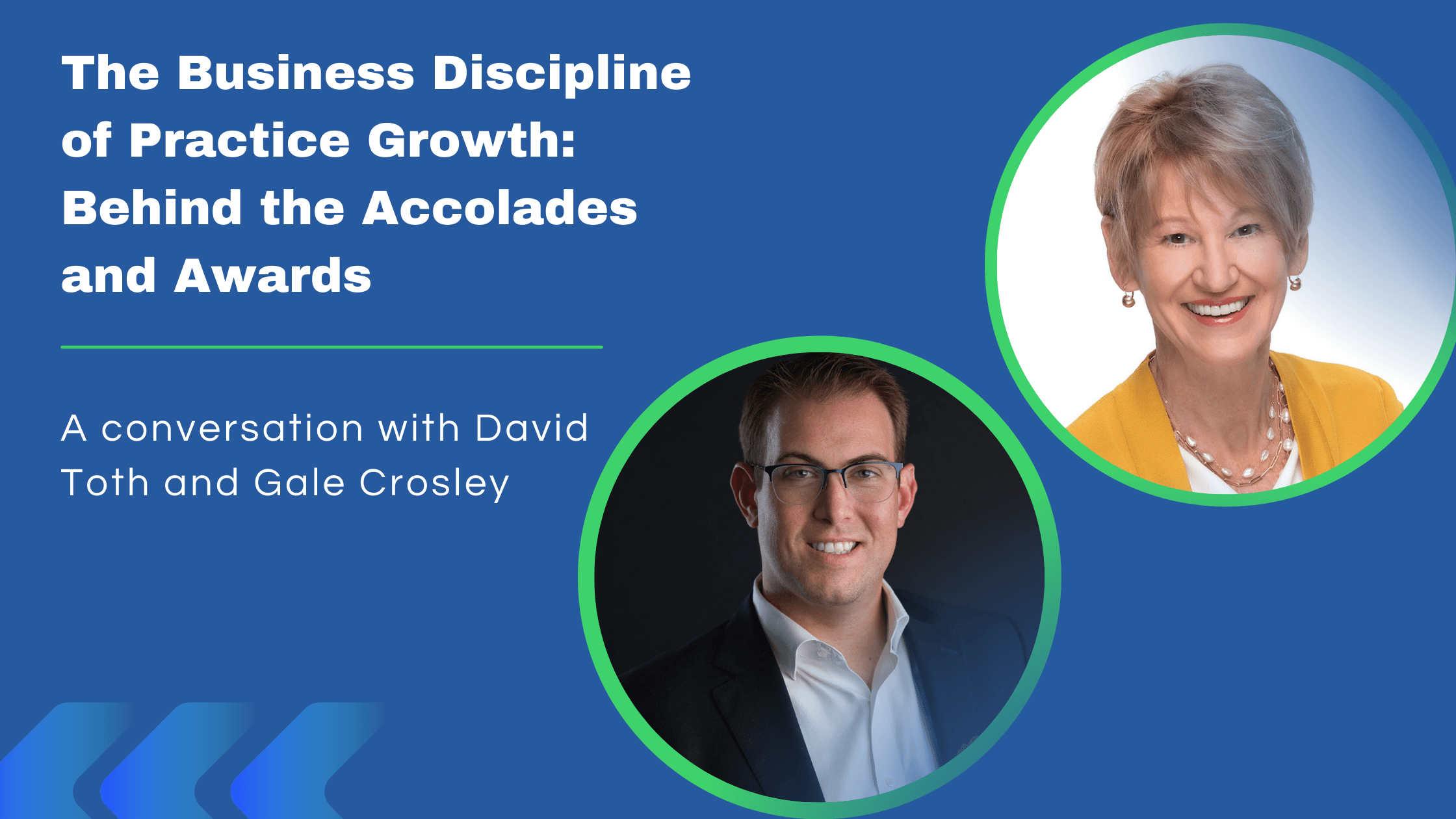5 min read
5 LinkedIn Trends Accounting Firm Leaders Can’t Afford to Ignore
In 2025, LinkedIn isn’t just a platform: it’s a decision point. Whether it’s a potential client, future talent, or a potential referral source, the...
4 min read
by:
 David Toth
on
Jun 11, 2025
David Toth
on
Jun 11, 2025

David empowers firms to grow strategically by aligning innovation, insight, and execution. He leads WRC’s signature programs and advises firm leaders on M&A, digital growth, and leadership development.
Table of Contents

The accounting profession stands at a crossroads. Traditional CPA firms face unprecedented disruption from technological innovation, changing client expectations, and a talent landscape in constant flux. In this environment, agility isn't just beneficial—it's essential for survival.
Managing partners and CEOs who cling to conventional governance structures find themselves increasingly outpaced by competitors who can pivot quickly in response to emerging opportunities and challenges. The most successful firms have recognized that agile leadership must be embedded within their governance DNA, not treated as an afterthought.
This transformation requires more than superficial changes. It demands fundamentally reimagining how CPA firms structure their decision-making processes, develop their talent, and execute their strategic vision. The stakes couldn't be higher: firms that successfully evolve their governance models position themselves to thrive, while those that resist change risk obsolescence in an industry that no longer rewards the status quo.
It’s a new era––and it’s time for firms to consider new governance models. In this article, we’ll share several strategic governance pillars that forward-thinking accounting firms are implementing today. These frameworks enable leadership teams to maintain stability while fostering the organizational agility needed to navigate our profession's increasingly complex and volatile landscape.
CPA firms operate under several distinct governance frameworks, each significantly impacting decision-making agility and strategic execution. Below, you’ll find an overview of the most common models we see firms embracing across our industry.
Partnership models distribute authority among equity partners and work best for firms prioritizing collective ownership and decision-making. They tend to be structured in a couple of different ways:
Corporate models create clear leadership hierarchies and are more common in larger firms where streamlined decision-making becomes essential for growth. Much like the partnership model, there are a couple of different approaches to the corporate model of governance:
Hybrid models blend elements of both approaches and serve firms navigating the transition from entrepreneurial to institutional leadership structures. In a hybrid model, firms are free to choose elements of both models to build a governance structure that works for their firm. For instance, a firm may choose to provide practice areas or regional offices with authority over operational decisions while adhering to firm-wide standards set by leadership. This creates overlapping authority structures that address different aspects of firm management, and create multiple opportunities for team members to be involved in leadership
The governance model directly influences a firm's ability to respond to market opportunities, make personnel decisions, allocate resources to emerging areas, navigate succession planning challenges, and discuss M&A activities. As the profession faces accelerating change, firms must consider how their governance models enable swift decision-making while maintaining partner engagement.
Clear decision-making frameworks ensure that your firm’s governance structure isn’t just theoretically strong, but truly effective in practice. Successful firms establish explicit processes that align authority with accountability while defining how critical choices are made and implemented.
It’s important to distinguish between strategic and operational decisions. Doing so allows appropriate deliberation for consequential matters such as partner admission or M&A while maintaining agility in the firm’s day-to-day operations. Having clear policies in place that grant individuals the authority to make operational decisions prevents the paralysis that can occur when boundaries remain undefined.
Data-driven decision-making should be a defining feature of governance models at the modern CPA firm. Forward-thinking firms establish robust metrics for evaluating options, collecting relevant performance data across practice areas, client satisfaction scores, staff utilization, and more. They invest in analytics capabilities that transform raw information into actionable intelligence, enabling leaders to identify patterns and opportunities that gut instinct might miss.
The result of this quantitative approach minimizes the politics and personality conflicts that traditionally plague professional service firm decisions. In short, your partners don’t make decisions based on intuition; the data should make the right decision obvious in many cases. When there is more nuance, partners debate strategy based on shared data rather than subjective opinions, and the resulting consensus carries stronger legitimacy and implementation commitment.
CPA firms are composed of multiple business units: from internal units like business development, marketing, and HR to practice and industry groups. Successful firms establish focused committees overseeing each of these areas with specific decision authorities and measurable objectives. Each committee maintains clear documentation of its purpose and expected outcomes, preventing governance bloat that undermines agility.
An effective organizational chart complements this structure by codifying reporting relationships and accountability paths. This blueprint becomes increasingly crucial as firms outgrow informal operational models.
The integration of executive roles—particularly the Chief Operating Officer—allows managing partners to focus on strategic priorities while ensuring administrative functions operate as coordinated enablers rather than isolated departments. A skilled COO translates vision into execution, maintaining operational discipline while enabling the decisiveness required in today's rapidly evolving accounting marketplace.
Effective change management has become the defining capability separating thriving CPA firms from those struggling to maintain relevance. Forward-thinking firms approach transformation as a strategic discipline rather than a reactive response to external pressures.
Successful change requires system-wide alignment across five critical dimensions: strategy, structure, processes, people, and technology. When these elements work in concert, firms achieve operational agility while maintaining governance integrity. The most effective transformations occur when leadership teams systematically assess their readiness by evaluating:
By regularly assessing these dimensions, CPA firm leaders identify potential barriers to change before they undermine strategic initiatives—creating governance that adapts continuously while maintaining the stability partners and clients expect.
Embracing agile governance is a necessity in today's rapidly evolving profession. By implementing frameworks that address governance models, decision-making processes, and organizational structures, firms align their operations with strategic goals while building the responsiveness needed to adapt quickly to emerging opportunities.
Success demands that firm leaders systematically evaluate their readiness for change across strategy, structure, processes, people, and technology dimensions—creating governance systems that balance stability with the flexibility required for innovation and growth.
At Winding River Consulting, our professionals provide tailored guidance through these governance transformations. From practice management consulting to facilitating partner retreats, we create structured environments where leadership teams collaboratively design decision frameworks and implementation roadmaps that reflect their firm's unique culture and strategic objectives.
By combining industry expertise with proven methodologies, we help your firm develop the governance agility needed to thrive—transforming how you make decisions, develop talent, and deliver value in today's dynamic accounting landscape. Interested in learning more? Contact us today.

5 min read
In 2025, LinkedIn isn’t just a platform: it’s a decision point. Whether it’s a potential client, future talent, or a potential referral source, the...

5 min read
My Conversation with Growth Guru Gale Crosley What does it take to be named a Most Recommended Consultant by INSIDE Public Accounting for 16 years,...

2 min read
Winding River Consulting has provided strategic growth services for dozens of the world’s Top 200 accounting firms. CLEVELAND, Ohio – Winding River...